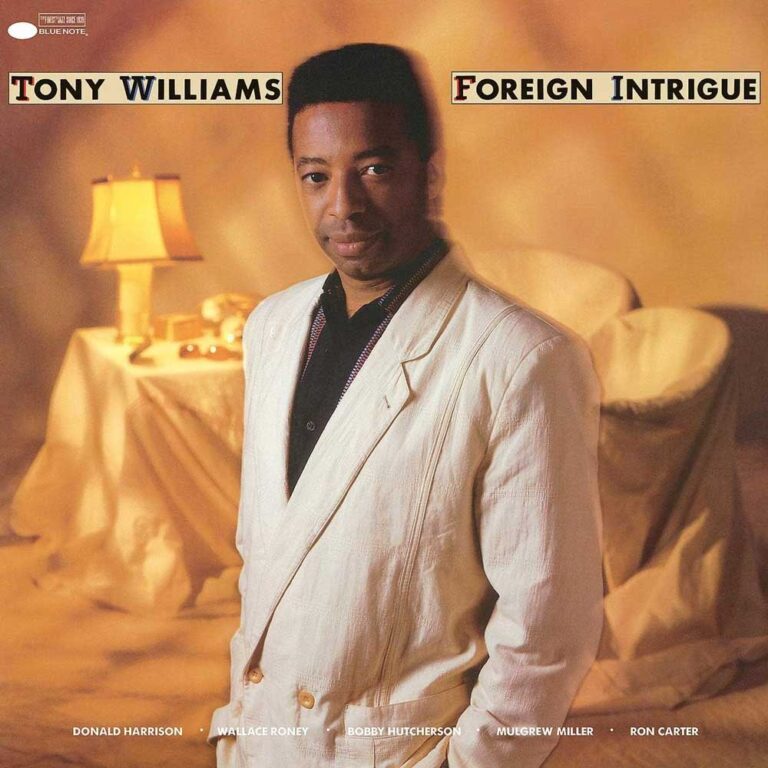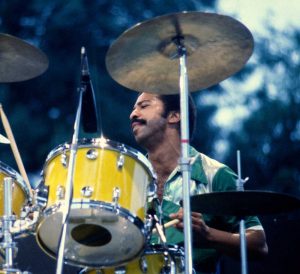22 February 1985: New York City’s Town Hall hosts a very special selection of jazz greats, old and new, from Herbie Hancock to Michel Petrucciani, for a sold-out celebration of Blue Note Records.
The label had gone dormant during the dying days of disco and fusion, but then the resurgence of acoustic jazz – spearheaded by Dexter Gordon, Arthur Blythe, Woody Shaw, the Marsalis brothers and other so-called ‘Young Lions’ – and close care of new boss Bruce Lundvall had propelled Blue Note back to public consciousness. Through the early 1980s, Mr Hitoshi Namekata had done a similar job in Japan, and along with producer Michael Cuscuna they also later helped persuade Rudy Van Gelder to remaster many classic Blue Note titles for CD later in the decade.
Tony Williams was a major part of that famous evening at Town Hall too, reuniting with the label after a 20-year hiatus. The brilliant drum prodigy, probably most famous for his seven-year association with Miles Davis, had endured his own difficult times during the late 1970s, but a move to California, extensive touring with Herbie Hancock’s VSOP band (featuring Wynton Marsalis on trumpet) and extensive composition lessons with Dr Robert Greenberg had given him a new lease of life. It was time for him to follow in the footsteps of his heroes Art Blakey, Max Roach and Philly Joe Jones and lead a drum-centric, acoustic jazz outfit.


The result was 1985’s “Foreign Intrigue”, his first solo album for six years and a jewel in the crown of Blue Note’s return to normal service. Williams’s new quintet was a perfect mix of experience and youth: bassist Ron Carter and vibraphone legend Bobby Hutcherson were frequent Tony collaborators, while the Young Lions generation was represented by Wallace Roney on trumpet, Mulgrew Miller on piano and Donald Harrison on alto sax.
Williams was unapologetic about putting the drums high in the mix, front and centre. But it was his compositions that he really wanted to shine. Many tunes came straight from Tony’s classes with Dr Greenberg: “Arboretum” was an exercise in counterpoint, “Clear Ways” in voice-leading. Perhaps not surprisingly then, these are the least memorable compositions of the album – elsewhere it’s chockful of classics. The dramatic title track has a distinctly Spanish, Miles-ish tinge, cleverly skating between 6/8 and 4/4 time, while “My Michele”, named for Williams’ wife and based around an F-major-seventh chord, is catchy without being cloying.
Meanwhile “Life Of The Party” is an irresistible salsa-tinged romp, and “Takin’ My Time” takes a leaf out of Blakey’s bluesy hard-bop book. “Sister Cheryl”, first appearing in slightly modified form on Wynton Marsalis’s 1982 debut album, has become nothing less than a modern standard (Hancock has called it “one of my favourite compositions ever”), even if it is in the very unusual key of B-major, keeping everyone on their toes. Pianist Miller later commented: “Outside of practicing scales, I’d never even played in B-major!”
“Foreign Intrigue” was a triumph, and the beginning of Williams’ glittering second Blue Note career. But he refused to rest on his laurels – by the end of 1985, he had started singing lessons, recorded the coruscating “Album” with Johnny Rotten and Public Image Ltd, and worked with everyone from Yoko Ono to Artists Against Apartheid. It was all meat and drink to this bona fide musical pioneer.

TONY WILLIAMS Foreign Intrigue
Available to purchase from our US store.Read on… Joe Henderson: Blue Note’s Multifaceted Tenor Master
Matt Phillips is a London-based writer and musician whose work has appeared in Jazzwise, Classic Pop, Record Collector and The Oldie. He’s the author of “John McLaughlin: From Miles & Mahavishnu To The 4th Dimension”.
Header image: Tony Williams. Photo: Lebrecht Music / Alamy.


